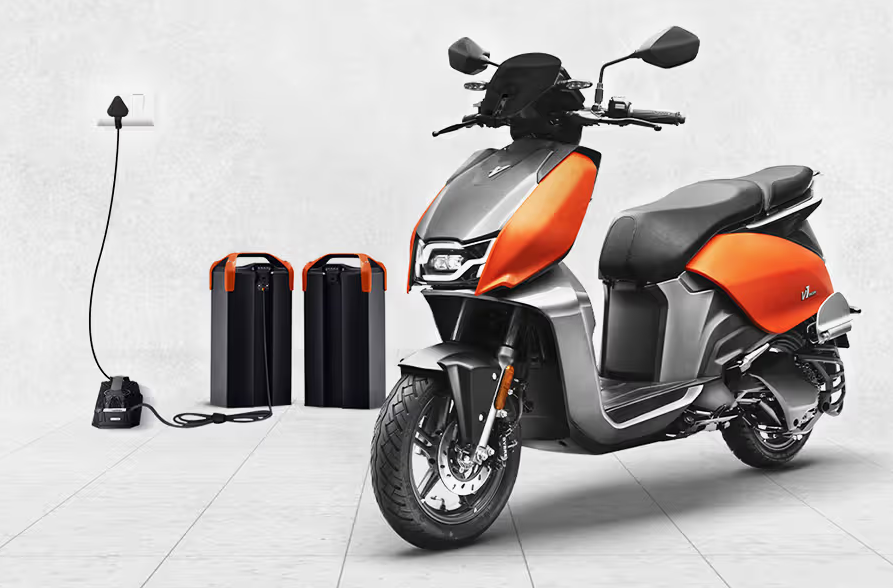
New Delhi: The electric two wheeler (e2W) market has seen a seismic shift towards legacy OEMs throughout 2024, putting the ambitions and earnings of electric-first manufacturers under test. But through it all, the country’s biggest two wheeler OEM and a legacy player, Hero MotoCorp, has remained on the fringes of the e2w market with just about 5% share. According to data from the Vahan portal, TVS Motor Company and Bajaj Auto together held more than a third of the market last year by selling over four lakh units of e2Ws together while Hero could not even cross the 50,000 units mark. In December 2024, the company sold just over a 1000 units and 1558 units in January this year.So will things change for Hero in 2025? Outgoing CEO Niranjan Gupta told analysts last week that till recently, the Hero VIDA electric scooter portfolio had no presence in half of the country geographically and there was no product addressing nearly a third of the e2w market price wise. These twin deficits are being now addressed, since Hero has launched the VIDA V2 Series, which is an upgrade over the V1 platform, and expanded distribution for the e2ws. Also, VIDA V2 LIte, addressing the sub one lakh rupee price band, has recently been launched in the market. The “transition” from the V1 platform to V2 platform meant lower dispatches of VIDA scooters to dealers and hence the drastic decline in sales numbers in the last one-and-a-half to two months.“If you see the play area and where we play, in a lot of towns actually we are exceeding 20% market share and in many 10% market share. So, I think it will not be right to look at an overall market share of 5% nationally given the price segment wise we are not present, in 60% of the market and geography wise, we are not present in half of the market. So, as we expand our retail distribution to cover more and more through Hero 2.0 stores and expand our portfolio to cover all the price segments, we are confident of winning in this,” Gupta told analysts.
Ola is already making the moves
As Hero ramps up production, expands distribution and begins addressing the largest chunk of the e2w market – the sub one lakh rupee price band with V2 Lite – market leader Ola has already set its sights on a much bigger share of the pie. The magic number OIa is targeting to achieve financial break even is 50,000 units in sales each month, Bhavish Aggarwal said recently. The electric-first e2W OEM had retailed just about half this number in January to reclaim the top spot in the pecking order.
“When we get there depends on market conditions and EV penetration but we do feel in the next few quarters, we can get to 50,000 monthly sales,” Aggarwal said. His confidence in doubling sales stems from new products (Ola had just announced entry into electric motorcycles) besides launching the Gen 3 platform; much wider distribution and service reach than in 2024; increasing penetration of electric vehicles in the two wheeler ecosystem and better performance of the new products. Aggarwal called Ola Gen 3 the “future” of two wheeler platforms in India.
With the soaring ambitions of the market leader and aggressive moves by legacy competitors Bajaj and TVS, perhaps Hero may not find the going all that easy in the next few quarters on its electric ambitions.
Bajaj has introduced a new platform for its e2w brand Chetak, called the 35 series, which is being aimed at the premium end of the market. Executive Director Rakesh Sharma said recently that production of products on the new platform will be scaled up from February onwards and distribution of the Chetak brand is already expanded to 250 exclusive stores besides 3000 sales points. As for TVS, it now offers its e2w iQube in three battery sizes, across multiple price points and sells these scooters through 900 stores across India.
Hero wants leadership by 2030:
Swadesh Srivastava, Chief Business Officer at the Emerging Mobility BU, said that “It’s very clearly mentioned in our House of Strategy that we are geared to build EV leadership and we’re not saying we’ll build EV leadership many years from now, which is in the near future. And that will require work on both aggressively positioning our products in each segment, and you have seen product portfolio expansion this year, you’ll see much more coming especially on the affordable segment, you will see some other use cases also being addressed with our new product being launched in the next fiscal. We have done huge geographical expansion. Obviously, we’re really building the brand out, we have taken the responsibility to build the charging infrastructure. So, all of these efforts are being put in place to really own the category”.

















